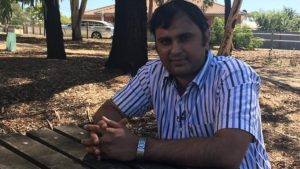Census reveals rainbow nation
The average Victorian is a female in her late 30s and – for the first time – with one parent born overseas, according to the 2016 census data.
The data also shows that Indians are the largest groups of migrants coming to Victoria, shading the English who held top spot in the 2011 census.
NSW, by contrast, is attracting large numbers of Chinese and Queensland is the preferred destination of New Zealanders.
The new Australian Bureau of Statistics figures show the average Victorian is a 37-year-old woman, who is married, with two kids, two cars and a mortgage on a three-bedroom house.
Significantly, in 2006, the typical Victorian home was owned outright.
The new figures, which come ahead of the release of the full 2016 census in June, show the typical Victorian is slightly younger than the national average age of 38 years.
Nationally, the typical migrant still comes from England and is 44 years old, down from 46 years old a decade ago.
The release of the first tranche of data from the troubled 2016 census paints a picture of a nation that has become older with less secure housing but more culturally diverse.
It also shows more Australians have a mortgage, fewer own their own homes and rate of rented households have risen in Queensland.
The median age for men is 37, while for Aboriginal and Torres Strait Islanders it is just 23 reflecting shorter life expectancy.
The data shows significant shifts in the makeup of populations particularly in Victoria and NSW where, for the first time, it became more common for one parent to have been born overseas than for both to be Australian-born.
The ABS says Australia’s population has changed a lot over the past 105 years.
“In 1911, when the first Census was taken, the ‘typical’ Aussie was a 24 year old male, but women have outnumbered men since 1979,” the ABS says.
Economist and social demographer Dr Ian Pringle said the census data showed that Australia was “truly a vibrant multicultural nation”.
“What this data shows is that there are some powerful cultural truths about Australia,” Dr Pringle said.
“It shows, whether people like it or not, we are a dynamic and multicultural migrant nation and we are still evolving,” he said.
“The data is also a mile post and a quiet reminder of the issue that we face as a nation; issues like housing affordability, our continued social cohesion and the full participation of our indigenous peoples in our social and economic life,” Dr Pringle said.
Indian migrant Sravan Threerthala embodies the physical and emotional investment many migrants have made in Australia – and then some.

Sravan Threerthala
The victim of drug-affected teenage thug who plunged a large screwdriver through his temple and out the other side of his skull in an unprovoked attack in 2009, no one would have blamed him if he had quit his adopted country.
But instead, after a month lying comatose in a hospital intensive care unit and almost two years of rehabilitation and rest, the 31-year-old has rebuilt his own life and is now helping others to improve theirs.
“You can’t blame a whole nation for the actions of an individual. I love Australia and it is my home now,” Sravan said.
He has made an amazing recovery from wounds that should have been fatal or at least severely debilitating. But even more amazing is his emotional and mental recovery.
In 2009, Sravan was an Indian student studying automotive engineering in Melbourne when he was attacked when a group of gate crashers arrived uninvited at a party he was attending.
“I don’t remember much about the incident but apparently when I asked the intruder to leave, he stabbed me with a screwdriver,” he said.
His doctors have told him that when he arrived at Royal Melbourne Hospital in an ambulance they rated his chances of survival at 10 per cent and at very best survival would mean the loss of his vision, his memory and the ability to walk.
Sravan spent three months in hospital and more than a year undergoing rehabilitation.
“I was told I was very lucky to be alive,” he said.
After regaining his health, Sravan returned to India but he said he never considered not coming back to Australia even though he was at the centre of storm of publicity at the time because his was one of a spate of attacks on Indian students in Melbourne.
At the time Indian students were regularly being beaten and robbed, causing an outcry and suggestions of damaged international relations between Australia and India.
“I believe you have to search for something where you lost it. I had a lot of good friends and experiences in Melbourne and I wanted to build my life here,” Sravan said.
“I don’t give up easily so I never considered not coming back. And after all you can’t blame a whole country for an individual’s actions.
Sravan is now a work broker, helping newly arrived migrant and refugees gain employment.
“I was asked a lot afterwards if I thought I was a victim of racism but I do not blame this country for what happened to me, it was not the government that was at fault, it was one person who was on drugs and now he is in jail,” he said.
Sravan’s life has now come full circle with the recent birth of his first child, a daughter.
Laurie Nowell
AMES Australia Senior Journalist












